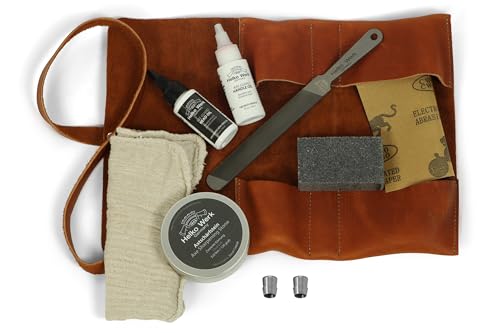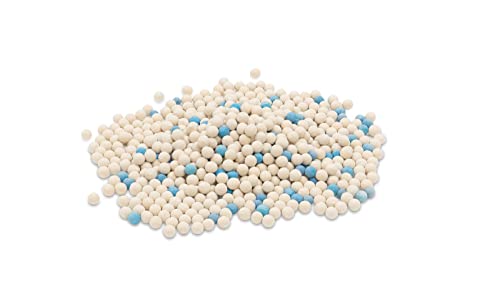
Compost is a valuable substance that gardeners and home growers often use to improve the fertility of soil. It is composed of organic matter, such as kitchen scraps, yard waste, and plant material, that has decomposed over time. Compost is known for its ability to enrich soil with essential nutrients and beneficial microorganisms, making it ideal for promoting healthy plant growth. However, what if you don’t have access to compost? Can you use sieved soil as a substitute?
Sieved soil, also known as screened soil or topsoil, is soil that has been sifted through a mesh to remove large debris and aggregates. This process helps to create a finer texture and remove any unwanted materials, such as rocks or sticks. While sieved soil can be beneficial for certain gardening purposes, it may not provide the same benefits as compost.
Compost is not only rich in nutrients but also teeming with beneficial bacteria, fungi, and other microorganisms that play a vital role in maintaining a healthy, balanced soil ecosystem. These microorganisms aid in the decomposition of organic matter, help control plant diseases, and improve soil structure. In contrast, sieved soil may lack these essential microorganisms, making it less effective in enhancing soil fertility.
Benefit of Using Sieved Soil Instead of Compost
Sieved soil is a valuable alternative to compost for a variety of gardening purposes. While compost is widely used and highly beneficial, sieved soil offers certain advantages that make it a preferred choice for some gardeners.
1. Suitable for specific plants: Sieved soil is particularly useful for plants that require a specific soil type or composition. By sieving the soil, you can remove any unwanted elements and ensure that it meets the specific requirements of your plants, such as pH levels or drainage capacity.
2. Avoiding potential contaminants: When using compost, there is always a risk of introducing contaminants or weed seeds into your garden. Sieved soil reduces this risk significantly, as it goes through a thorough screening process to remove any unwanted debris or potential sources of contamination.
3. Customizable nutrient content: Compost contains a wide range of nutrients that benefit plants, but the nutrient composition is not always suitable for every type of plant. By using sieved soil, you have more control over the nutrient content, allowing you to customize and adjust it to meet the specific needs of your plants.
4. Soil structure improvement: Sieving soil helps break up clumps and improve its structure, making it more suitable for root development and water penetration. This can enhance the overall health and growth of your plants, particularly in areas with heavy or compacted soils.
5. Cost-effective solution: While compost can be expensive or difficult to obtain in certain areas, sieved soil can be prepared using readily available materials, such as garden soil or topsoil. This makes it a cost-effective solution for gardeners looking to improve their soil quality without spending a considerable amount of money.
In conclusion, sieved soil offers several benefits over compost, including its suitability for specific plants, avoidance of potential contaminants, customizable nutrient content, improvement of soil structure, and cost-effectiveness. Consider incorporating sieved soil into your gardening routine to maximize the health and growth of your plants.
Comparing Sieved Soil and Compost
When it comes to gardening, both sieved soil and compost have their own advantages and disadvantages. Understanding the differences between the two can help you make an informed decision on which one to use for your specific needs.
Sieved Soil
Sieved soil refers to the process of removing large particles and debris from the soil using a sieve or screen. This process helps to create a finer-textured soil that is more suitable for certain gardening applications. Sieved soil can be beneficial in situations where the existing soil is heavy, compacted, or contains a lot of rocks and other unwanted elements. By removing these larger particles, sieved soil provides a more consistent and uniform planting medium.
However, it is important to note that sieved soil alone may not have sufficient nutrients to support optimal plant growth. It lacks the organic matter, microorganisms, and nutrients found in compost. Therefore, it is often necessary to amend sieved soil with compost or other organic matter to ensure your plants receive the necessary nutrients.
Compost
Compost is a nutrient-rich soil amendment that is created through the decomposition of organic materials, such as leaves, grass clippings, kitchen scraps, and manure. It is often referred to as “black gold” due to its many benefits for plant growth. Compost improves soil structure, enhances moisture retention, and provides a steady release of essential nutrients.
Compost is particularly beneficial for improving the fertility of depleted or poor soils. It helps to replenish organic matter, promote beneficial microbial activity, and enhance overall soil health. Using compost in your garden can lead to healthier plants, increased yields, and a more sustainable and environmentally friendly gardening practice.
While compost alone can be used as a planting medium, it may not be suitable for all gardening applications. For example, in raised beds or containers, compost alone may retain too much moisture and not provide enough drainage. In these cases, a mix of compost and sieved soil or other amendments may be more appropriate.
Conclusion:
Both sieved soil and compost have their own unique benefits and purposes in gardening. Sieved soil provides a finer-textured, uniform planting medium, while compost enriches soil with nutrients and enhances overall soil health. In many cases, a combination of the two may be ideal for optimal plant growth and productivity. Assessing your specific gardening needs and soil conditions will help you determine the best approach for your garden.
Advantages of Sieved Soil
Sieved soil, often referred to as screened or sifted soil, offers several advantages when used in gardening and landscaping projects:
1. Improved Drainage: Sieving the soil helps remove larger particles and debris, resulting in a finer texture. This allows for better drainage, ensuring that excess water can easily escape, preventing waterlogging and root rot.
2. Enhanced Aeration: Sieved soil contains smaller particles that create more space between them. This improves the soil’s ability to hold and exchange oxygen, promoting healthy root growth and preventing soil compaction.
3. Reduced Weed Growth: Sieved soil is less likely to contain weed seeds or roots, helping to minimize weed growth in your garden or landscape beds. This saves you time and effort by reducing the need for frequent weeding.
4. Increased Nutrient Availability: The finer texture of sieved soil increases the surface area exposed to nutrients and beneficial microorganisms. This allows for better nutrient absorption by plants, resulting in healthier growth and higher yield.
5. Improved Seed Germination: Sieved soil provides a consistent, fine-textured medium that is ideal for seed germination. The soil particles are evenly sized, creating a uniform environment that encourages successful germination and early seedling growth.
6. Easier to Work With: The absence of larger debris in sieved soil makes it easier to handle and work with, especially during planting and transplanting. It allows for smoother soil preparation and ensures better seed or plant placement in the desired location.
In conclusion, using sieved soil offers various benefits that contribute to the overall health and success of your gardening and landscaping endeavors.
Potential Uses of Sieved Soil
Sieved soil, also known as screened soil or sifted soil, refers to soil that has been passed through a sieve to remove any large debris or clumps. While it may not have all the beneficial nutrients and organic matter found in compost, sieved soil still has several potential uses:
Gardening: Sieved soil can be used as a base or top dressing for planting beds, containers, or raised beds. It provides a loose and well-drained medium for plant root growth and can be mixed with compost or other organic matter to improve fertility.
Seed Starting: Sieved soil is ideal for starting seeds in trays, pots, or seedling cells. Its fine texture ensures good seed-to-soil contact and allows for optimal moisture retention. Adding some compost or vermiculite can further enhance its nutrient content and water-holding capacity.
Lawn Renovation: Sieved soil can be used to level out uneven areas in lawns or to prepare the soil before laying new turf. Mixing it with some sand or compost can help improve soil structure, drainage, and fertility for a healthier lawn.
Container Gardening: Sieved soil can be used as a component of potting mixes for container gardening. It provides good drainage while still retaining enough moisture for plant roots. Mixing it with compost, perlite, or coconut coir can create a well-balanced growing medium.
Backfilling and Landscaping: Sieved soil can be used for backfilling holes, trenches, or excavated areas in landscaping projects. It can help stabilize the soil, promote proper drainage, and support plant establishment. Mixing it with compost or organic matter can further enhance its fertility.
Soil amendment: Although sieved soil may not be as nutrient-rich as compost, it can still be used as a soil amendment to improve soil structure, drainage, and aeration. It can be incorporated into existing garden beds or mixed with compost to create a more balanced soil mix.
While sieved soil may not be a complete substitute for compost, it still offers several potential uses in gardening and landscaping. Its fine texture, improved drainage, and flexibility make it a valuable resource for various applications.
Considerations When Using Sieved Soil
While sieved soil can be a useful alternative to compost, there are several considerations to keep in mind before using it in your gardening or planting projects:
1. Nutrient Content: Sieved soil may not have the same nutrient content as compost. Compost is rich in organic matter, which provides essential nutrients for plant growth. Therefore, it is important to assess the nutrient needs of your plants and ensure they are adequately met when using sieved soil.
2. Soil Structure: Sieved soil may have a different structure compared to compost. Compost has a crumbly texture that improves soil structure, enhances water retention, and promotes root growth. Soil that has been sieved may have a finer texture, which could affect drainage and compaction. Consider adding organic amendments or adjusting the soil mix to improve the structure if necessary.
3. Microbial Activity: Compost contains a diverse range of beneficial microorganisms that contribute to soil health and facilitate nutrient cycling. When using sieved soil, there may be a lower presence of these microorganisms, which can impact soil fertility and plant growth. To mitigate this, consider adding organic matter, such as compost or aged manure, to introduce beneficial microorganisms.
4. pH and Soil Testing: Sieved soil may have a different pH level compared to compost. Before using sieved soil, it is recommended to perform a soil test to determine its pH and nutrient levels. This will help you make informed decisions regarding soil amendments and pH adjustments, if necessary, to create optimal growing conditions for your plants.
5. Disease and Weed Seeds: If the soil used for sieving is not properly sterilized or composted, it may contain disease pathogens or weed seeds. These can pose a risk to plant health and can lead to unwanted weed growth. To minimize this risk, ensure that the soil used for sieving is free from any potential contaminants.
In conclusion, while sieved soil can be a viable option, it is important to consider the nutrient content, soil structure, microbial activity, pH levels, and the presence of disease or weed seeds. Regular soil testing and amending can help address any deficiencies and create a suitable growing medium for your plants.






